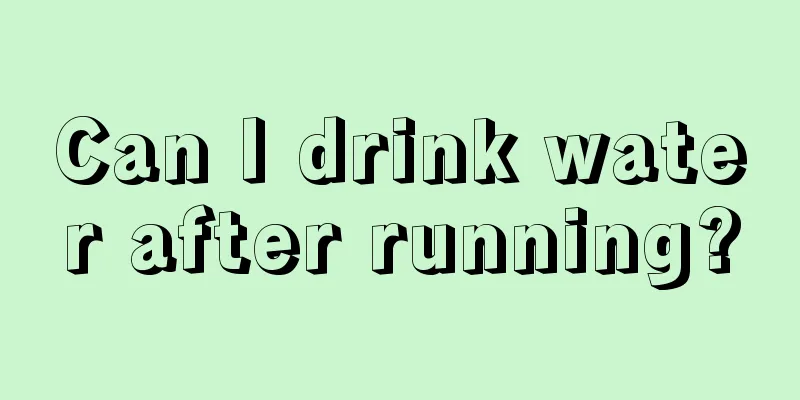What are the dangers of extracorporeal lithotripsy for kidney stones?

|
Many people choose extracorporeal lithotripsy to treat kidney stones, especially patients who are sensitive to surgery. It is safe and effective. However, extracorporeal lithotripsy also has certain side effects. After the operation, there will be mild colic, hematuria, fever, bloody stools and other symptoms. These are generally caused by friction with the surrounding mucosal tissue during the lithotripsy process, but they will recover after a period of rest. What are the dangers of extracorporeal lithotripsy for kidney stones? 1. Colic: It is more common in kidney stones and is usually mild. It can be relieved by symptomatic treatment with antispasmodics and analgesics. If the kidney stones are too large and accumulate in the ureter after lithotripsy, blocking the ureter, the stones can be crushed again at the site of accumulation. 2. Hematuria: After extracorporeal shock wave lithotripsy, almost all patients will experience hematuria of varying degrees, with kidney stones being the most common. Hematuria is caused by the friction between the stones and the surrounding tissue mucosa during the lithotripsy process, which causes mucosal damage, stone fragments slightly scratching the mucosa when moving during excretion, and edema and bleeding caused by shock waves. Generally, hematuria is mild and the blood is light red. No special treatment is required and it will improve and disappear on its own within 1 to 2 days. 3. Fever: It is mostly caused by uncontrolled urinary tract infection and lithotripsy, or urinary tract obstruction due to lithotripsy accumulation. Antibiotic treatment should be given, and bacterial culture and drug sensitivity test should be performed to select antibiotics when necessary. 4. Blood in stool: If too much gas accumulates in the gastrointestinal tract during treatment, the shock wave may damage the gastrointestinal mucosa and cause intestinal wall bleeding. Generally, the bleeding is mild and can heal on its own without special treatment. Cleaning the intestines before treatment can reduce intestinal gas accumulation and avoid damage. 5. Accumulation of gravel in the ureter (stone street): This is a common problem after lithotripsy for larger stones. If stones accumulate in the ureter after lithotripsy and cause obstruction, extracorporeal shock wave lithotripsy can be used to relieve the obstruction, and ureteroscopy can be used to remove the stones if necessary. 6. Renal parenchymal damage: Generally, renal damage is mild and can recover quickly without leaving scars. 7. Recurrence of stones : This is mostly due to the failure to remove the factors that cause stones, or the leaving of some residual stones that are not completely expelled, as well as the embedding of broken stones in the mucosa. Prevention is the main method of prevention and control. |
<<: Is there any harm in hair transplantation? Is there any harm in hair transplantation?
>>: What are the hazards of light wave rehabilitation therapy device
Recommend
Can a cold cause nasopharyngeal cancer? What is the cause of nasopharyngeal cancer?
Can a cold cause nasopharyngeal cancer? What is t...
How to reduce swelling of pierced earlobes
Girls all love beauty. Even if they know that ear...
What can a chest x-ray show?
Chest X-ray is a type of X-ray examination, and c...
Is it really good to drink yogurt in the afternoon?
Yogurt is more nutritious than milk because it is...
What should girls with leg hair do
Girls with a lot of body hair will usually look v...
Uterine cancer prevention, health care and healthy diet
Currently, uterine cancer ranks first among gynec...
What is the difference between bone metastasis pain and ordinary pain?
Bone metastasis refers to the cancer cells of mal...
How much does biological therapy for ovarian cancer cost
I believe everyone knows that ovarian cancer has ...
Will cervicitis induce cervical cancer? Is avoiding long periods of sitting helpful in preventing cervical cancer?
Cervical cancer is one of the gynecological disea...
Measures to be taken to treat brain cancer
The correct measures for treating brain cancer ha...
These seven methods can help you reduce hair loss
When autumn comes, people tend to lose their hair...
What is the reason for the purple mouth
Under normal circumstances, our mouth is relative...
Urine test epithelial cells high
Under normal circumstances, human urine contains ...
What to eat to prevent lung cancer? Several vegetables that can prevent lung cancer
The incidence of lung cancer is increasing year b...
Routine examination methods for testicular cancer
Testicular cancer is very harmful to the health o...









